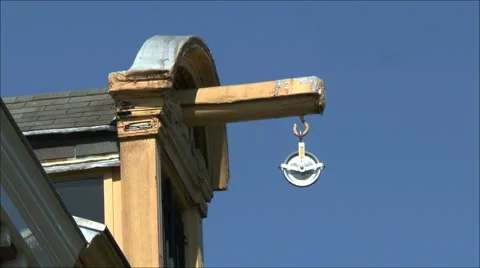We had a short bus tour to see the highlights of Amsterdam. But the best way to really appreciate the beauty of the city is to take a canal cruise, which we did right after.
With more than 100 kilometers of canals, about 90 islands, and a thousand and a half bridges, Amsterdam rivals Venice, but has its own charm. The canals, dug in the 17th century during the Dutch Golden Age, form concentric belts around the city and are lined with historic buildings.
We glided under the many low bridges crisscrossing the canals and marveled at the magnificent gabled mansions of 17th century merchants that served as homes, as well as workplaces. Our local tour guide pointed out the uniqueness of these canal homes.
In those days, space was at a premium, that is why the houses were built long and narrow. Most of them are only less than thirty feet wide. But to make up for this shortfall, the Dutch learned to build up and to use steep staircases to maximize space efficiency. Houses also had dual entrances - the well-to-do used the doors above the stairs, while trades people and servants scurried in through the door underneath. A closer look at the top-most floor would show large hooks and pulleys installed against the walls. These were used to pull up furniture and heavy goods up and through the windows.
I noticed that most houses seem to protrude forward, as if going to fall on you. I asked if this was because of the constant use of the pulley and the weight of the objects that were hoisted, that in time, the houses started to lean over the streets…and maybe one of these days, they’d fall and crumble. Our guide said that this was actually done on purpose for easier pulling and to minimize the chance of heavy items colliding with the building façade on their way up. What an ingenious idea!
But some houses do lean sideward. Now, this is due to foundation issues, she said, for Amsterdam is built on sandy soil. Or it could also be because the wooden pillars holding the base of the homes have started to rot. But no matter how lopsided they are, they are still standing because they support one another. My geologist husband whispered to me, “I will never have a house built here.”
But honestly, I thought all these crooked buildings looked charming and almost whimsical, with their bright colours and elaborate trimmings. And behind the impressive façade of every pretty house are glorious personal stories or tales from historical events. The guide also reminded us not to be deceived by old, forlorn structures that look quite unattractive from upfront. Some of them conceal beautiful gardens, museums, or hotels inside.
As we sailed past these homes, we also saw their residents going about their daily routine – sweeping the balcony floors, washing the windows, watering the plants on little pots sitting on the window sills, enjoying a late al fresco dinner on the terrace, or just sipping a cold drink and waving at us tourists cruising around their city. It’s true that for us, this might just be a mode of sightseeing, but for the locals, the canals are a part of their lives. They travel through the canals to and from work, they hang out on floating restaurants and bars on their free time, they take out their recreational boats and kayaks for some water fun and workout, they hold festivals in the water, and in the winter, they skate on the frozen waters.
Some even make the canals their permanent homes. Yes, there are dozens and dozens of moored houseboats tethered to the banks. Apparently, a good number of Dutch people have chosen this kind of lifestyle, beginning in the 70s. Basically, you have a floating house with everything that a normal house also has – a living room, a dining room, a kitchen, bathrooms with working toilets, and even porches. The difference is you get to enjoy the canal views everyday and you see hundreds of other boats pass by your window all the time. There are approximately 2,500 houseboats in Amsterdam now and the number is growing, making houseboats quite expensive nowadays.
Our guide said there are houseboat hotels and houseboat apartments-for-rent for tourists who might want to sample this water lifestyle for a few days. Hmmm…not a bad idea for next time.
Photo Credits:
globalblue.com, theguardian.com, meininger-hotels.com, businessinsider.com, Marion Golsteijn (Wikipedia), Владимир Шеляпин (Wikipedia), amsterdam-travel-guide.net, holland.com, eatingeurope.com, passportchop.com, fluentin3months.com, whatsupwithamsterdam.com, pond5.com, viator.com, kingdombythesea.nl



















































































Comments